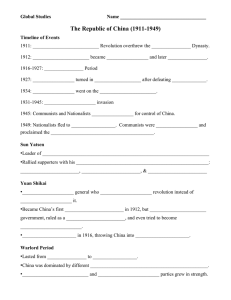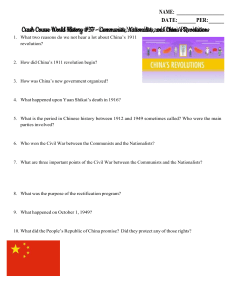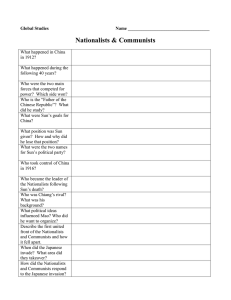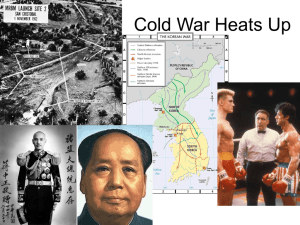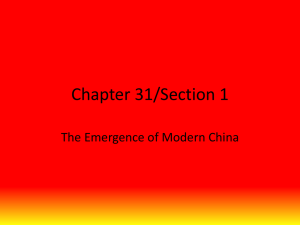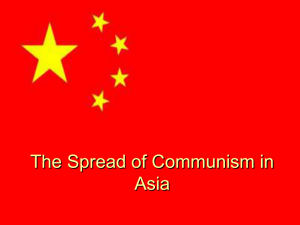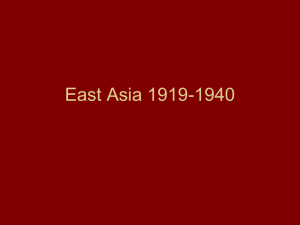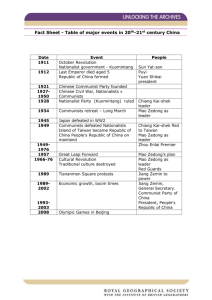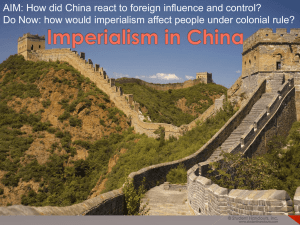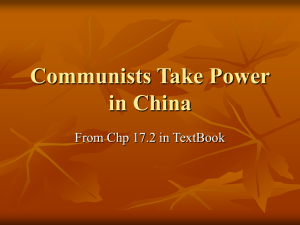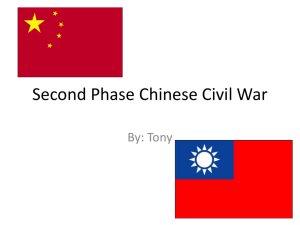The Republic of China Powerpoint Notes
advertisement
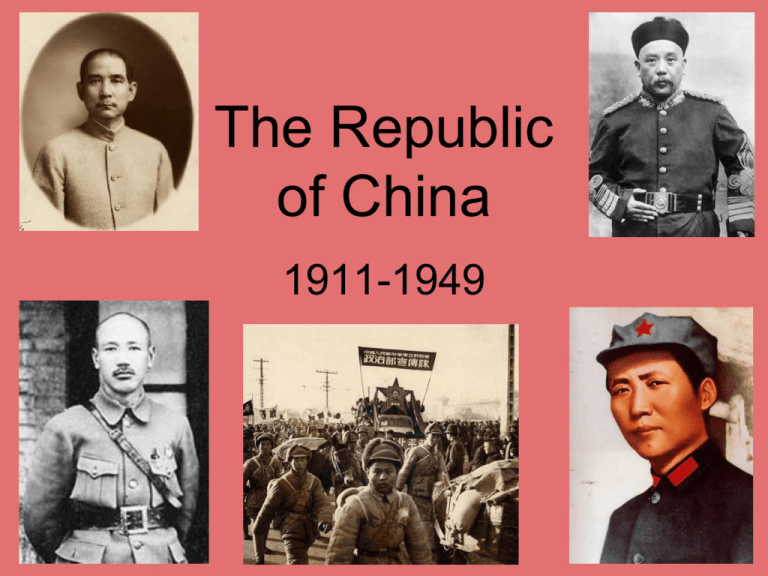
The Republic of China 1911-1949 • 1911: Republican Revolution overthrew Qing Dynasty. • 1912: Yuan Shikai became president and later dictator. • 1916-1927: Warlord Period. • 1927: Nationalists turned on Communists after defeating warlords. • 1934: Communists went on Long March. • 1931-1945: Japanese invasion. • 1945: Communists and Nationalists battled for control of China. • 1949: Nationalists fled to Taiwan. Communists were victorious and proclaimed the People’s Republic of China. Sun Yatsen • Leader of Republican Revolution of 1911 • Rallied supporters with his “Three Principles of the People” – Nationalism – Democracy – Livelihood Yuan Shikai • Manchu general • Joined revolution instead of crushing it • Became China’s first president in 1912 • Disbanded government and ruled as a dictator • Tried to become emperor • Died in 1916, throwing China into chaos Warlord Period • 1916 to 1927 • China dominated by different regional military leaders • Nationalist and Communist Parties grow in strength Nationalist Party • Kuomintang (KMT) Party • Founded by Sun Yatsen • Later led by Chiang Kaishek • Gained control of China in 1927 with support of Communists Communist Party • Chinese Communist Party (CCP) • Grew out of May 4th Movement (1919) • Founded in 1921 • Later led by Mao Zedong Nationalists vs. Communists • After working together to defeat warlords, Nationalists turned on the Communists in 1927 • Communists were forced on the Long March in 1934 • Mao Zedong emerged as Communist leader The Long March Japanese Invasion (1931-1945) • 1931: Japan invaded Manchuria and established Manchuko with Pu Yi as the puppet emperor • 1937: Japan launched major invasion and occupied Shanghai and Nanking Rape of Nanking • After a bloody battle to take Shanghai, the Japanese moved on Nanking • Nanking fell with little resistance due to poor Chinese military leadership • Massacre occurred over a six week period starting on December 14, 1937 • 300,000 estimated deaths • Over 10 million Chinese died during WWII
